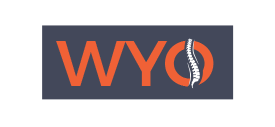 Shoulder
Shoulder
Shoulder Anatomy
The shoulder is the most flexible joint in the body that enables a wide range of movements including forward flexion, abduction, adduction, external rotation, internal rotation, and 360-degree circumduction. Thus, the shoulder joint is considered the most insecure joint of the body, but the support of ligaments, muscles, and tendons function to provide the required stability. Read More
Conditions
- Arthritis of the Shoulder
- Acromioclavicular (AC) Joint Osteoarthritis
- Shoulder Fracture
- Clavicle Fracture
- Glenoid Fractures
- Fracture of the Shoulder Blade (Scapula)
- Shoulder Pain
- Shoulder Trauma
- Frozen Shoulder
- Rotator Cuff Tear
- Shoulder Dislocation
- Acromioclavicular Joint Dislocation
- Subluxation
- Shoulder Ligament Injuries
- Baseball and Shoulder Injuries
- Bicep Tendon Rupture at Shoulder
- Calcification Tendinitis
- Shoulder Bursitis
- Shoulder Instability
- Shoulder Labral Tear
- Shoulder Impingement
- SLAP Tears
- Little League Shoulder
- Sternoclavicular Joint Injury
Procedures
- Shoulder Joint Replacement
- Outpatient Shoulder Replacement
- Reverse Shoulder Replacement
- Shoulder Arthroscopy
- Arthroscopic Bankart Repair
- Arthroscopic Frozen Shoulder Release
- Shoulder Stabilization
- AC Joint Stabilization
- Shoulder Reconstruction Surgery
- Acromioclavicular (AC) Joint Reconstruction
- Shoulder Labrum Reconstruction
- Complex Shoulder Reconstruction
- ORIF of the Clavicle Fractures
- Capsular Release
- Rotator Cuff Repair
- SLAP Repair
- Triceps Repair
- Intraarticular Shoulder Injection
- Ultrasound-Guided Shoulder Injections



 Pay Your Bill
Pay Your Bill Request an Appointment
Request an Appointment

 Driving Directions
Driving Directions